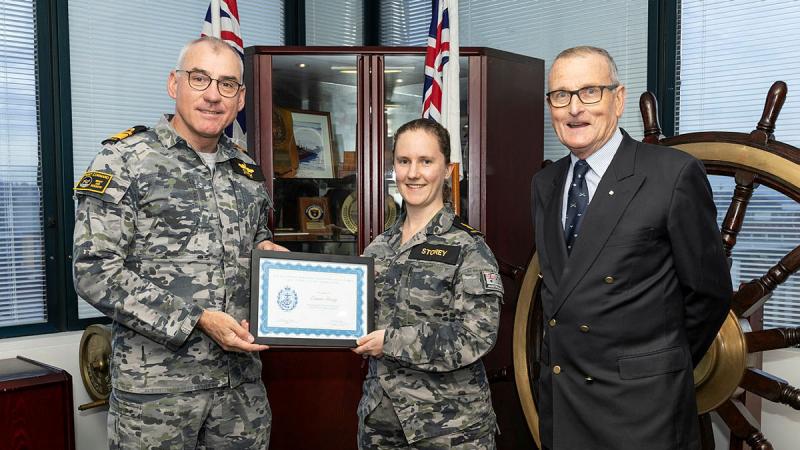- One in seven of world’s deepwater shark & ray species threatened with extinction
- Majority of Australia’s threatened endemic sharks & rays are deepwater species
- Ten of Australia’s 13 threatened endemic sharks & rays are heavily impacted by Australia’s biggest fishery, with population declines of up to 90%
- New report identifies critical habitat that would improve their chance of survival
- Endangered sharks are caught as bycatch and may be sold as ‘flake’ in your fish and chips
The Australian Marine Conservation Society (AMCS) and Humane Society International Australia (HSI) are calling for better protection of our threatened endemic sharks and rays after a recent international report showed that one in seven of the world’s deepwater shark and ray species are at risk of extinction due to overfishing.
Australia has 13 sharks and rays found only in our waters that are threatened with extinction, and the vast majority of them are deepwater species, which typically grow to 1-1.5 metres in length. Their extinction in Australian waters would be a global extinction event.
Deepwater sharks and rays are vulnerable to exploitation because of their long lifespans and low reproduction rate. In Australia, much of these bottom-dwelling species’ essential habitats are not protected, particularly where they move between the coast and deep water during their lifecycle, from adult habitats to inshore nursery habitats, and breeding and pupping habitats.
Ten of these threatened endemic species – including the greeneye spurdog, whitefin swellshark and yellowback stingaree – have been heavily impacted by Australia’s biggest fishery, the Southern and Eastern Scalefish and Shark Fishery (SESSF), with population declines of up to 90%. The SESSF extends from southern Western Australia to southern Queensland, including the waters around Tasmania and Lord Howe Island.
AMCS and HSI have just released an independent report – Fishery and spatial management solutions to inform the protection and recovery of Australia’s threatened endemic elasmobranchs – that identifies six regions near existing marine parks that with better protection or fisheries management could help these 10 endemic species avoid extinction. The six regions – off the coast of NSW, Victoria, Tasmania, Flinders Island, Kangaroo Island and in the Great Australian Bight – can provide refuge and sanctuary for more than one of the endemic species.
AMCS shark scientist Dr Leonardo Guida said: “These species are unique to Australia for the same reason as many of our land animals are – they evolved in isolation over millions of years. Australia’s threatened endemic shark and ray species are as unique as a koala and in just as much trouble if not worse. Their extinction in Australian waters would be a global extinction event.
“In general juvenile sharks and rays spend their early life near the coast before heading to deeper waters, then returning inshore to have their pups. It’s not enough to protect their juvenile habitat if we don’t protect their adult, breeding or pupping habitats where they could also be killed. Not protecting the sharks and rays’ habitat for the various stages of their life cycle is like having a 40km/h speed limit outside a high school but not down the road for the kindergarten.
“For example, if we protected a narrow corridor allowing sharks and rays to move freely between the Jervis Bay state marine park to the Commonwealth marine park offshore, we would help protect nine of the 10 threatened endemic sharks and rays and improve breeding success.
“Enhanced protection of the area around Flinders Island and in the Great Australian Bight off Coffin Bay would help protect three of the most at-risk endemics: the critically endangered whitefin swellshark, the endangered greeneye spurdog and endangered grey skate.”
Australia is home to one quarter of the world’s sharks and rays species, with 331 species in our waters, of which nearly half are endemic, found nowhere else in the world. The 10 threatened shark and ray species impacted by the SESSF are: the whitefin swellshark, longnose skate, greeneye spurdog, eastern angelshark, grey skate, yellowback stingaree, greenback stingaree, Melbourne skate, Sydney skate and the coastal stingaree.
These threatened endemic sharks and rays are fascinating creatures. The greeneye spurdog uses its big green eyes to see in almost pitch-black depths up to 1km down, and has one of the longest pregnancies in the vertebrate world at nearly three years. The whitefin swellshark will swallow water to swell up almost twice its girth to make itself look bigger and harder to eat. The bright-yellow-and-white-speckled eastern angelshark lays buried in the sand on the seafloor for days on end before it ambushes prey that swims above its mouth.
The report identifies suitable habitat for each species based on their biological, ecological and environmental requirements, along with Australian fisheries data and tracking data of two species: the whitefin swellshark and the greeneye spurdog. Previously, our habitat information for these threatened endemic sharks and rays was based mostly on fisheries data which left knowledge gaps for conservation planning.
The report then identified areas that may provide the best conservation outcomes for each species, taking into account existing fishing closures or marine protected areas, and how modifications leveraging these protected areas could enhance protection for the full life of the species: connecting feeding, breeding, pupping and/or egg-laying, and nursery habitat.
Report co-author and shark and ray ecologist Ciaran Hyde said: “We developed a set of criteria and methodology so that we can identify critical habitats, which if given adequate protection from fishing impacts can provide refuge to allow the recovery of threatened species.
“These species don’t recognise state borders, so it’s really important there is a strong network of protections across both habitats and jurisdictions with long-term protection status to allow these species a chance of persistence.”
Report co-author and quantitative marine scientist Dr Ross Daley said: “A key consideration in selecting the location of these areas is connectivity between juvenile and adult habitat. Species must complete their life cycle to survive.”
HSI marine biologist Lawrence Chlebeck said: “Tragically, the majority of these endemic species have no protection under fishing rules or under Australia’s nature laws despite some being recognised as critically endangered, such as the whitefin swellshark.
“The good news is that five of the species examined in this report are awaiting federal Environment Minister Tanya Plibersek’s decision to list them as protected under our nature laws. Changing how Australia fishes will ensure these species are able to recover and thrive.”








